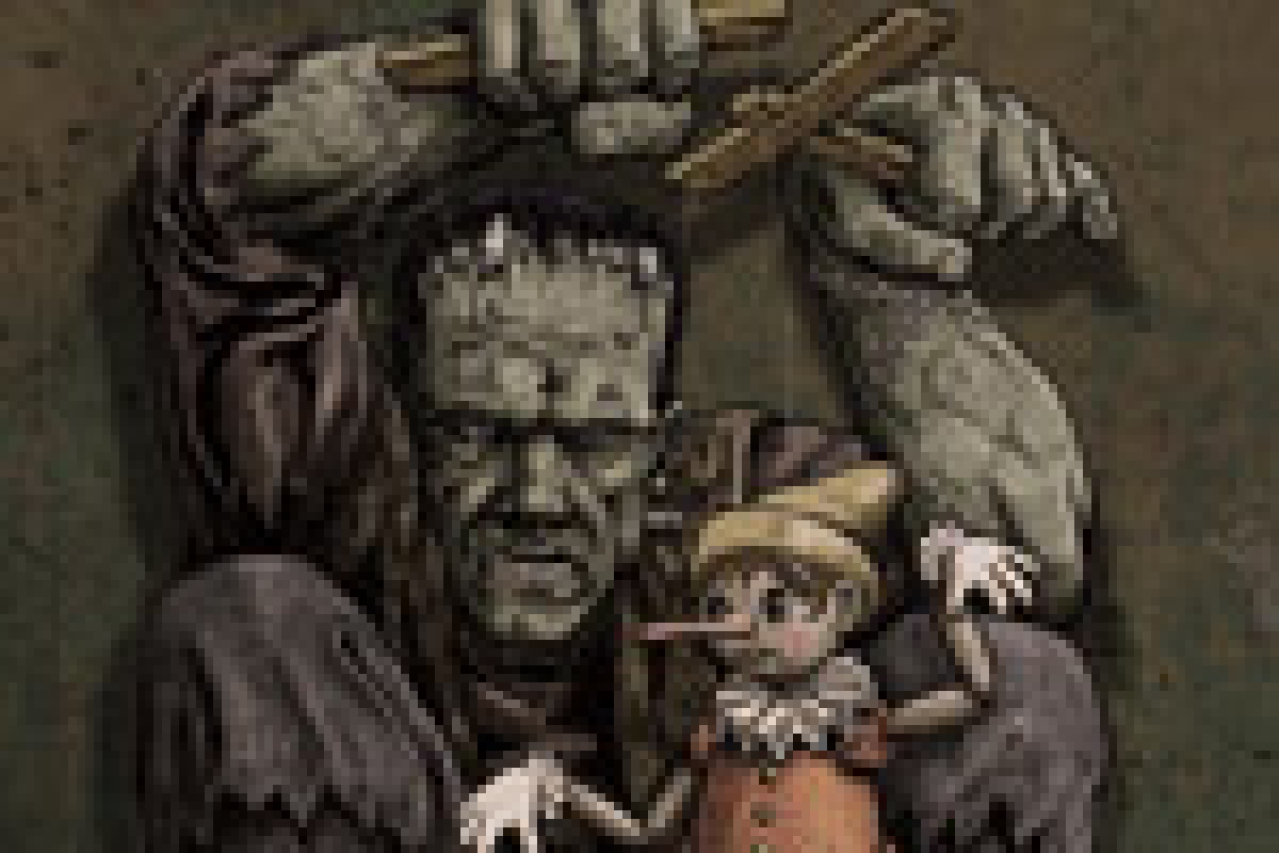Greg Allen Tells The Terrible Truth

The Strange and Terrible True Tale of Pinocchio
(© Joe Mazza)
Greg Allen, Founding Director of The Neo-Futurists, has concocted many unique theatrical works over his career, from the long-running Too Much Light Makes the Baby Go Blind to Jokes and Their Relation to the Unconscious (a comedy to end all comedy), both of which have been seen not only in Allen’s native Chicago, but also in New York.
Now, he is in rehearsal for his newest work, The Strange and Terrible True Tale of Pinocchio (the Wooden Boy) As Told By Frankenstein’s Monster (the Wretched Creature), which begins previews March 8 at the Neo-Futurarium. He recently took some time to let TheaterMania peek behind the curtain of his decidedly adult mash-up of these two classic stories.
THEATERMANIA: You’ve tackled Ibsen, Kafka, O’Neill, and more. What’s drawn you to Pinocchio?
GREG ALLEN: As I did with Kafka, Ibsen, and O’Neill, I like adapting work that people are familiar with and showing it from a different perspective, turning it on its head. With Pinocchio, I liked the fact that it’s a character and a story that everyone “knows,” but that everyone knows wrong. The preponderance of this “knowledge” comes from the Disney film, but like most Disney films, very little of it is true to the original.
TM: What are some of the differences?
GA: In Carlo Collodi’s 1882 novel, Pinocchio’s nose does grow when he lies but only once; the moment he meets the talking cricket he murders him with a hammer; Pinocchio and his father Gepetto are swallowed by a shark not a whale; etc. etc. etc.. The book is filled with bizarre events and perverse, malicious characters. These things were, of course, white-washed out of the Disney film and every children’s stage version ever done. The original is much more akin to a Grimm’s Fairy Tale than to a nice little tale about bad things happening when you lie. To contradict the common view of Pinocchio and get a chance to tell my version — a version which, despite the framing device, is much more faithful to the original — really excited me.
TM: And why Frankenstein, as compared to other monsters from literature, for instance, Dracula?
GA: Mary Shelley’sFrankenstein is the perfect foil for Collodi’s character: Pinocchio and Frankenstein’s Monster are really the two best-known characters who are “created” without a mother. Both stories are also primarily about an innocent central character trying to find his father. And yet they are opposite sides of the same coin: the Creature is seen as an adult who is outcast and reviled because of his monstrous appearance even though he is basically kind, and Pinocchio is seen as a child and therefore constantly forgiven even though he is basically evil. This dichotomy gave me the perfect setting to explore issues of fatherhood, betrayal, forgiveness, perception, and identity, as well as draw some really fascinating stage echoes.
TM: What’s been the biggest surprise in fusing these two classics?
GA: I’m surprised at how political and personal the play has turned out to be. Without giving away too much, there is a very strong yet unspecific theme of Capitalism and the American Dream which runs throughout the play, making it surprisingly contemporary in this election year. I was also happy to find how much I was able to express my personal perspectives through the Monster’s voice. Anyone who knows me will recognize a lot of heart in there.
TM: What can you tell me about the puppets?
GA: The show is filled with every type of puppet and wild stagecraft we could throw at it. Dan Kerr-Hobert, who’s the Director of Puppetry and plays Geppetto, has done a fantastic job of figuring out the perfect way to dramatize each event in the story through various forms of puppetry (with help from Blair Thomas and Joe Mazza). We have five shadow puppet screens, use Bunraku, hand and rod puppets, have a Punch and Judy show within the show, and even use those seaside cut-out placards for a couple characters. Another character even comes back four times in the same puppet form but is made out of different substances each time. It will be a visual feast as well as being filled with stellar performances by six amazing actors.











